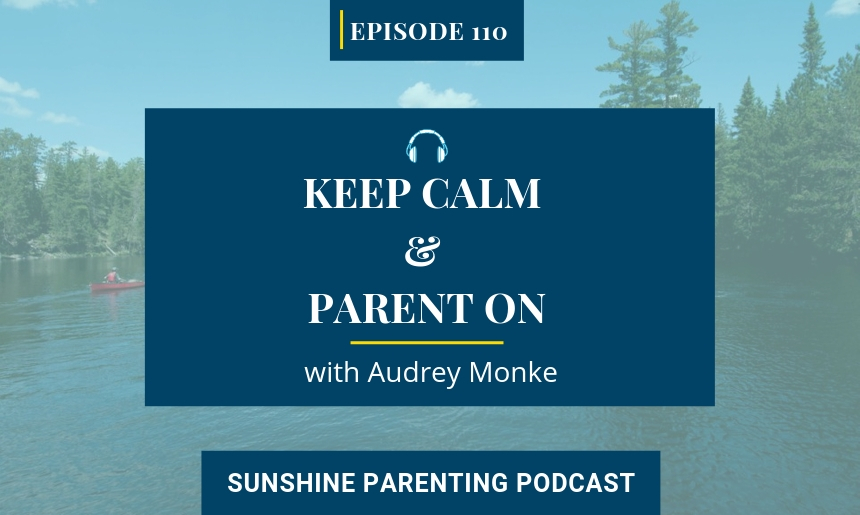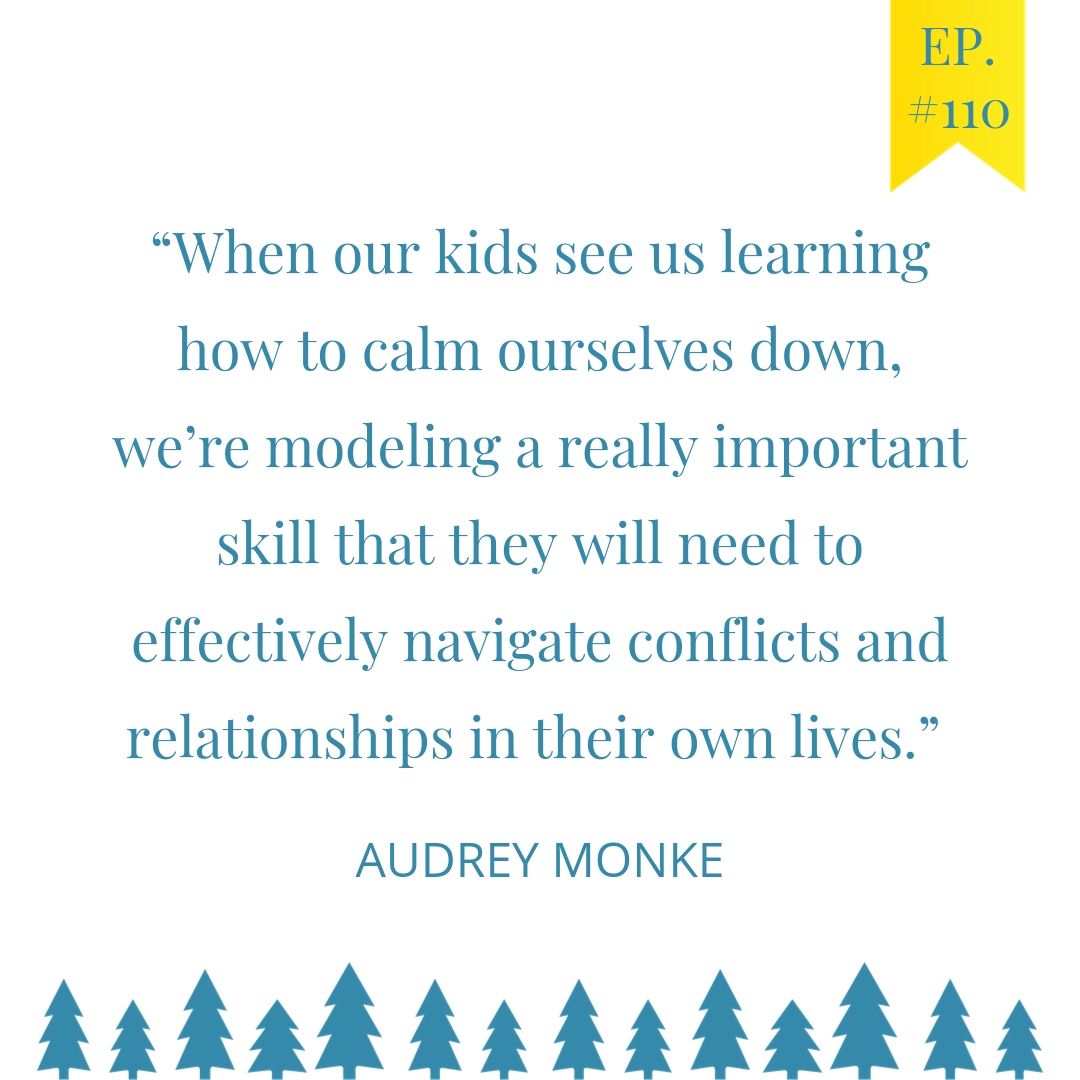
Download Episode!
I’ve had such an incredible time this fall meeting with parents, teachers, and kids in person to talk about some of the strategies I write about in my book, Happy Campers.
One topic that comes up regularly is the importance of learning to keep ourselves calm and model calm down strategies for our kids, as well as helping our kids figure out their own calm down strategies.
In this episode, I am sharing my ideas and tips on how to keep calm and parent on.
Big Ideas
- Synonyms for Calm:
- motionless, undisturbed, halcyon, peaceful, placid, quiet, serene, still, tranquil, untroubled
- Antonyms:
- agitated, excited, nervous, excitable, frenzied, passionate, ruffled, wild, turbulent, worried
- For most of us, our level of calm seems to depend on our personality.
- The ability to calm ourselves down can be a lifelong journey and it’s something really important for parents to focus on.
- The most important predictor of our happiness and wellbeing is the meaningful, sustained relationships we have with the people in our lives.
- Learning to self-regulate and manage anger can really have lasting positive effects.
- “Flipping Our Lids” is when the fight or flight part of our brains takes over and we overreact.
- If we are upset with another person or a circumstance, we should wait to resolve the conflict when there is no longer a high level of emotion. So the first step to solving a problem is calming down.
Recommended Strategies for Calming Down:
- Breathing
- Learning to Breathe
- Deep Breathing (Web MD) Most people take short, shallow breaths into their chest. It can make you feel anxious and zap your energy. With this technique, you’ll learn how to take bigger breaths, all the way into your belly.
- Get comfortable. You can lie on your back in bed or on the floor with a pillow under your head and knees. Or you can sit in a chair with your shoulders, head, and neck supported against the back of the chair.
- Breathe in through your nose. Let your belly fill with air.
- Breathe out through your nose.
- Place one hand on your belly. Place the other hand on your chest.
- As you breathe in, feel your belly rise. As you breathe out, feel your belly lower. The hand on your belly should move more than the one that’s on your chest.
- Take three more full, deep breaths. Breathe fully into your belly as it rises and falls with your breath.
- Box Breathing (Medical News Today) Box breathing is a simple technique that a person can do anywhere, including at a work desk or in a cafe. Before starting, people should sit with their back supported in a comfortable chair and their feet on the floor.
- Close your eyes. Breathe in through your nose while counting to four slowly. Feel the air enter your lungs.
- Hold your breath inside while counting slowly to four. Try not to clamp your mouth or nose shut. Simply avoid inhaling or exhaling for 4 seconds.
- Begin to slowly exhale for 4 seconds.
- Repeat steps 1 to 3 at least three times. Ideally, repeat the three steps for 4 minutes, or until calm returns. If someone finds the technique challenging to begin with, they can try counting to three instead of four. Once someone is used to the technique, they may choose to count to five or six.
- Breathing Beads
- Five Finger Breathing
- Exercising
- Creating a Special Calm-Down Retreat Space (“Chill Spot” or “Recombobulation Area”) with a Favorite Calming Activity
- Some items you might want in your calm-down space:
- Coloring or drawing supplies
- Craft supplies (beading, knitting, crocheting, needle point, etc.)
- A puzzle
- Meditation or Prayer Book
- Journal or journaling paper
- CandleMusic (with or without headphones)
- Musical Instrument (if you play)
- Some items you might want in your calm-down space:
- Listening to Some Soothing Music
- Take some deep breaths
- Piano Relaxation (Spotify)
- Relaxing Classical (Spotify)
- Accessing a Different, More Positive Emotion
- Gratitude
- Take a “Gratitude Walk” (Jon Gordon)
- Write in a gratitude journal.
- Laugh/Humor
- My “Funny Stuff” Board on Pinterest (Warning: My kids say this stuff is only funny to me.)
- Asking for a Hug
- Tina Payne Bryson’s tip: put one hand over your heart.
- Gratitude
- Loosening up/Stretching
- simple yoga poses feel great
What’s Your Favorite Calm Down Strategy?
Quotes
Audrey: “It’s important to be self-aware and know what our personality or setpoint is because it will affect us in our relationships with other people and especially so in our parenting because kids can be somewhat unpredictable and often can kind of create more havoc in our lives. And so they require us to really dig deep and find a calm that we might not normally need to access.”

Audrey: “Especially with kids, oftentimes their behavior, their words, their actions, they didn’t plan to do them, but their lid is flipped and so they’re unable to make good decisions about how to manage those really strong emotions.”
Audrey: “We can flip the script on the idea of a timeout. Sometimes we need a break from our kids for a few moments to regroup and figure out what we want to do. Make it a positive thing where you can say to your kids, ‘You know what? I need a few moments.'”
Related Posts/Podcasts
If you liked this episode, listen to Ep. 103: How to Stop Losing Your Sh*t with Your Kids
